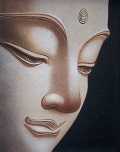Forum Replies Created
-
AuthorPosts
-
dosakkhayo
ParticipantI thought I had understood, but upon reflection, I realize I may not have fully grasped it, so I’m asking this question.
Kamaguna suggests that the attracting quality is created in one’s own mind.
Then, does the explanation of suddhatthaka mean that kamaguna doesn’t exist in external objects, but rather that the mind distortedly reflects the attracting quality when it creates suddhatthaka?
dosakkhayo
ParticipantI read the post you mentioned and understood that ‘attracting quality’ also exists in inert objects. That’s why I wanted to thank you for your explanation.
with metta.
dosakkhayo
ParticipantThank you for your explanation. I appreciate your help.
1 user thanked author for this post.
dosakkhayo
Participant“Satipatthana leads to Nibbana. Does that analysis lead to Nibbana?”
No. I understand what you’re saying. I need to focus more on nibbana. I was just looking for an explanation that would be easier for the general public to approach. However, I think it would be more appropriate to focus on nibbana by myself. Thank you.
dosakkhayo
ParticipantI apologize, but this is a bit difficult to understand. If I may ask, are you suggesting that external objects are also somewhat distorted or contaminated to a certain degree?
1 user thanked author for this post.
dosakkhayo
ParticipantI have summarized my understanding of distorted sanna as follows:
Distorted sanna refers to bahidda sanna.
It arises according to the built in system of indriya (manomaya kaya + physical body) which causes distortion.
Bahidda sanna creates the illusion that external objects possess attractive or repulsive characteristics.
However, external objects composed of apo, tejo, pathavi, and vayo are neutral.
This illusion can be overcome by understanding the mechanism that drives the system.
It is Paticca Samuppada.
Indriya samvara refers to the process of gradually eliminating ajjhatta kaya by understanding this distortion.
dosakkhayo
ParticipantThank you for your clear explanation. Sadhu! Sadhu! Sadhu!
dosakkhayo
ParticipantThank you for the revision.
Is “bahidda rupa” also a rupa created by the mind, just like “ajjhatta rupa,” since it is a distorted version of rupa?
dosakkhayo
ParticipantThank you for the clarification. If so, I think this post’s chart needs revision.
dosakkhayo
ParticipantIt seems necessary to distinguish between (i) pancakkhandha in the context of simply referring to combined mental entities, and (ii) pancakkhandha as it refers to pure experience in arahant phala samapatti. This is because upadana to the pancakkhandha only makes sense in the former case.
August 23, 2024 at 6:59 pm in reply to: Post on “Citta, Manō, Viññāna – Nine Stages of a Thought” #51591dosakkhayo
ParticipantThank you for your service.
August 22, 2024 at 7:59 pm in reply to: Post on “Citta, Manō, Viññāna – Nine Stages of a Thought” #51557dosakkhayo
ParticipantAmazingly Fast Time Evolution of a Thought (Citta)
3. Those nine stages of contamination during the lifetime of the fundamental unit of cognition (within a billionth of a second) are citta, manō, mānasan, hadayaṃ, pandaran, manō manāyatanam, mana indriyam (or manindriyam), viññāna, viññānakkhandha. A Tipiṭaka reference is given in the post, “Pabhassara Citta, Radiant Mind, and Bhavaṅga.”
- Amazingly, these nine steps occur within a split second, and the Buddha said there are billions of citta arising within the blink of an eye. Each citta has three stages: uppāda, ṭhiti, and bhaṅga. Those nine steps occur before the bhaṅga or the termination stage.
- It may be hard to believe, but we can prove this true with the following example.
___
I think this phrase is the reason why I came to see the 9-stage evolution of citta as occurring in a single citta.
This clearly conflicts with the idea that the 9-stage evolution occurs in a single citta vithi.
So, should I view the 9-stage evolution of citta vithi and the 9-stage evolution of citta as progressing separately?
1 user thanked author for this post.
dosakkhayo
ParticipantI attached this video to point out that the role of DNA has been overestimated. I disagree with the discussion about evolutionary theory that comes up in the latter part of the video. Please keep this in mind while watching the video. Thank you.
August 22, 2024 at 8:45 am in reply to: Post on “Citta, Manō, Viññāna – Nine Stages of a Thought” #51533dosakkhayo
ParticipantOh, I had thought until now that the 9-stage evolution occurs in a single citta. If it occurs in a single citta vithi, then there’s no problem. Thank you for clarifying.
dosakkhayo
ParticipantI think this video may be helpful to taryal.
-
AuthorPosts
